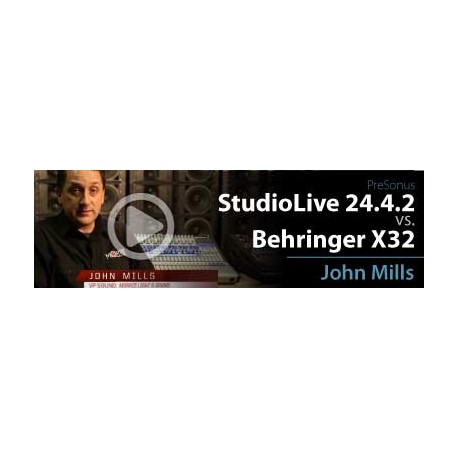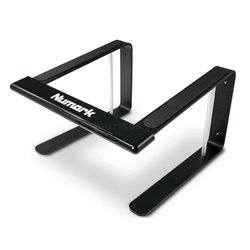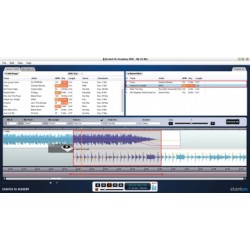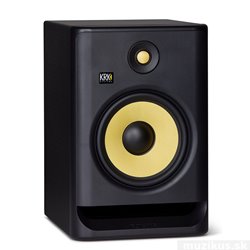StudioLive 16.0.2

Meet the StudioLive 16.0.2!
Our StudioLive™ 24.4.2 and 16.4.2 changed the game, offering amazing performance and ease of use for a great price. Now we’ve packed the same audio quality, performance, seamlessly integrated software (including remote control) into a smaller, even more affordable package.
Small size. Bigger possibilities.
In a “footprint” of less than 2 square feet (0.19 m2), the compact, 16-channel StudioLive 16.0.2 offers 8 mono input channels and 4 stereo channels and provides 12 XMAX™ Class A solid-state mic preamps. (Well, okay, it actually has 13 XMAX preamps; the Talkback input has one, too.)
Click here for the XMAX preamp story
But don't let its size fool you; the 16.0.2 is jam-packed with features and processing power, employs the same workflow and easy-to-use mixing-surface design as the bigger StudioLive boards, and sounds every bit as good, with the same high-definition, wide-dynamic-range, digital converters.
Click
here for A/D/A and Jet PLL story
Click
here for analog ease-of-use-story
More than a mixer: an integrated system.
The 16.0.2 integrates a 16x16 FireWire interface and comes with Capture™, Studio One Artist™ recording and production software, and Virtual StudioLive, bidirectional control software, and it works great with our free SL Remote iPad and iPhone control apps.
The 16.0.2 integrated software system details
130 quality signal processors at your fingertips.
The 16.0.2's Fat Channel is well stocked with compressors, limiters, gates, phase reverse, high-pass filters, and 3-band semi-parametric EQ. Two stereo, 32-bit floating-point effects processors deliver delay and reverb effects.
Fat Channel signal processing and effects
Our first compact mixer with MIDI control from a footpedal.
Moreover, a glance at the rear panel reveals that "Junior" offers something the two bigger boards don't: MIDI In and Out. You can recall Scenes from a DAW using MIDI Program Changes, control the main output volume and effects level, and even mute effects between songs—all thanks to the magic of MIDI control.
What was then is now: complete store and recall.
Two factors work against getting that Perfect Mix with an analog mixer.
First, the Perfect Mix can be hard to reproduce a week, day, or hour after you
perfect it. And second, a good mix should be dynamic: levels, effects, and EQ
should be tailored to each song or segment of the show, service, or
presentation.
StudioLive solves this problem by letting you save all of your
digital settings for quick setup and recall.
You’ve read the book. Now see the movie(s).
Watch the 16.0.2 overview video at the upper left side of this page. Then,
because the 16.0.2 has so much in common with our other StudioLive mixers, watch
some of the other 60+ videos about how to use our StudioLive series. You find
them on the 16.4.2 and 24.4.2 product pages…or search for “StudioLive” on YouTube
and Vimeo.
Better yet, use our WHERE TO BUY to locate your
nearest PreSonus dealer.
Because nothing beats actually getting your hands
on a StudioLive digital mixer. You’ll see what we mean about intuitive
ease-of-use. You’ll hear what we mean about Class A preamps, rich DSP effects,
and overall sound quality.
You'll come to believe in StudioLive family
values. And you'll understand why StudioLive 16.0.2 is the most exciting new,
small-format digital mixer on the planet.
- 8 mono mic/line channel inputs, each with:
- High-headroom Class A XMAX™ mic preamplifier
- XLR mic and balanced ¼" line inputs
- 60 mm precision fader
- 4 stereo line channel inputs, with:
- High-headroom Class A XMAX™ mic preamplifier (Ch. 9, 11, 13, and 15)
- XLR mic inputs (Ch. 9, 11, 13, and 15)
- Balanced ¼" line inputs (Ch. 9-16)
- Unbalanced RCA line inputs (Ch. 13-16)
- 60 mm precision fader (4 stereo)
- 4 Auxiliary buses (pre/post-fader send)
- 2 Internal FX buses
- 2 stereo 32-bit digital effects processors with customizable reverb and delay presets
- Fat Channel signal processing on all channels and buses, with:
- 3-band semi-parametric EQ (individual band on/off)
- Full-featured compressor
- Standard downward expander
- Limiter
- Phase reverse (12 mic preamplifiers only)
- Pan with dedicated 15-LED display
- Stereo link for input channels and aux buses
- High-pass filter
- One 31-band stereo graphic EQ (on main outputs only)
- 16-in/16-out FireWire recording interface (24-bit/44.1 kHz and 48 kHz)
- Compatible with most audio software via ASIO, Windows Audio, Core Audio
- Scene store and recall
- Settings can be copied among channels and buses and saved as user presets.
- Software bundle for Mac® and Windows® includes:
- PreSonus Studio One Artist™ digital audio workstation
- PreSonus Capture™ live-recording software
- PreSonus Universal Control with Virtual StudioLive™ bidirectional mixer-control software
- Lockout mode protects your settings from meddlers and accidents
- MIDI Control Mode provides control over:
- Scene and FX Preset recall
- Main Volume, FXA, and FXB output levels
- FXA and FXB assign/unassign to Mains
- Free StudioLive Remote iPad® wireless-control software available at the Apple App Store
Computer system requirements:
Below are the minimum
computer-system requirements for your StudioLive
16.0.2.
Windows
- Windows 7, Vista, XP (32-bit and 64-bit)
- Intel Pentium 4 1.6 GHz processor or AMD Athlon 64 (Turion) (2.5 GHz or faster recommended)
- 1 GB RAM (2 GB or more recommended)
- Mac OS X 10.5.2 or later (32-bit and 64-bit)
- PowerPC G4 1.25 GHz or Intel Core Solo 1.5 GHz processor (2 GHz or faster recommended)
- 1 GB RAM (2 GB or more recommended)
- IEEE 1394 FireWire 400 Port
- Internet connection recommended
- DVD-ROM drive
- Internal or external 7200 RPM storage drive highly recommended
Note that the speed of your processor, amount of RAM and size and
speed of your hard drive will greatly affect the overall performance of your
recording system. Also, a more powerful system (faster processor with more RAM)
will allow for lower latency (signal delay) that you might experience while
monitoring audio or MIDI signals.
Monitor resolution for both PC and
Macintosh should be no lower than 1024x768 pixels.
| Microphone Preamp | ||
| Type | XLR Female, Balanced | |
| Frequency Response to Direct Output (at unity gain) | 20 Hz-40 kHz, 0 / -0.5 dBu | |
| Frequency Response to Main Output (at unity gain) | 20 Hz-20 kHz, ± 0.5 dBu | |
| Input Impedance (Balanced) | 1 kΩ | |
| THD to Direct Output (1 kHz at unity gain) | < 0.005%, +4 dBu, 20 Hz–20 kHz, unity gain, unwtd | |
| THD to Main Output (1 kHz at unity gain) | 0.005%, +4 dBu, 20 Hz-20 kHz, unity gain, unwtd | |
| EIN to Direct Output | +125 dB unwtd, +130 dB A-wtd | |
| S/N Ratio to Direct Output (Ref = +4 dB, 20 kHz BW, unity gain, A-wtd) | -97 dB | |
| S/N Ratio to Main Output (Ref = +4 dB, 20 kHz BW, unity gain, A-wtd) | -94 dB | |
| Common Mode Rejection Ratio (1 kHz at unity gain) | +65 dB | |
| Gain Control Range (± 1 dB) | -16 dB to +67 dB | |
| Maximum Input Level (unity gain) | +16 dBu | |
| Phantom Power (± 2 VDC) | +48 VDC | |
|
| ||
| Line Inputs, Balanced | ||
| Type | 1/4" TRS Female, balanced mono | |
| Frequency Response to Direct Outputs (at unity gain) | 10 Hz-40 kHz, 0 / -0.5 dBu | |
| Frequency Response to Main Outputs (at unity gain) | 20 Hz-20 kHz, 0/-0.5 dBu | |
| Input Impedance |
10 kΩ | |
| THD to Direct Output (1 kHz at unity gain) | <0.0007%, +4 dBu, 20 Hz-20 kHz, unity gain, unwtd | |
| THD to Main Output (1 kHz at unity gain) | <0.005%, +4 dBu, 20 Hz-20 kHz, unity gain, unwtd | |
| S/N Ratio to Direct Output (Ref = +4 dBu, 20 kHz BW, unity gain, A-wtd) | -105 dB | |
| S/N Ratio to Main Output (Ref = +4 dBu, 20 kHz BW, unity gain, A-wtd) | -94 dB | |
| Gain Control Range (± 1 dB) | -20 dB to +20 dB | |
| Maximum Input level (unity gain) | +22 dBu | |
|
| ||
| Line Inputs, Unbalanced | ||
| Type | RCA Female, unbalanced (stereo pair) | |
| Maximum Input Level | +22 dBu | |
|
| ||
| Main Outputs | ||
| Type | XLR Male, balanced (stereo pair); 1/4” TRS Female, balanced (stereo pair); | |
| Rated Output Level | +24 dBu | |
| Output Impedance | 10 kΩ | |
|
| ||
| Aux Outputs | ||
| Type | 1/4” TRS Female, balanced (mono) | |
| Rated Output Level | +18 dBu | |
| Output Impedance | 51Ω | |
|
| ||
| Monitor Outputs | ||
| Type | 1/4” TRS Female, balanced (stereo pair) | |
| Rated Output Level | +18 dBu | |
| Output Impedance | 51Ω | |
|
| ||
| System Cross Talk | ||
| Input to Output (Ref = +4 dBu, 20 Hz-20 kHz, unwtd) | -90 dBu | |
| Adjacent Channels (Ref = +4 dBu, 20 Hz-20 kHz, unwtd) | -87 dBu | |
|
| ||
| Noise Gate (Expander) | ||
| Threshold Range | -84 dB to 0 dB | |
| Attack Time | Adaptive (0.2 - 2.5 ms) | |
| Release Time | 70 ms | |
| Expander Attenuation Range | 2:1 | |
|
| ||
| Compressor | ||
| Threshold Range | -56 dB to 0 dB | |
| Ratio | 1:1 to 14:1 | |
| Response Time (Attack/Release | 0.2 ms / 1.0 s (“Tight”) to 180 ms/1.0 s (“Smooth”) | |
| Auto Attack and Release | Attack = 10 ms, Release = 150 ms | |
| Curve Types | hard and soft knee | |
|
| ||
| EQ | ||
| Type | 2nd - order shelving filter (Q = 0.55) | |
| Low (Low-pass or Bandpass) | 36 to 465 Hz, ± 15 dB | |
| Mid | 26 Hz to 3.5 kHz, ±15 dB | |
| High (High-pass or Bandpass) | 1.4 kHz to 18 kHz, ±15 dB | |
|
| ||
| Digital Audio | ||
| ADC Dynamic Range (A-wtd, 48 kHz) | 118 dB | |
| DAC Dynamic Range (A-wtd, 48 kHz) | 118 dB | |
| FireWire | S400, 400 Mb/s | |
| Internal Processing | 32-bit, floating point | |
| Sampling Rate | 44.1, 48 kHz | |
| A/D/A Bit Depth | 24 bits | |
| Reference Level for 0 dBFS | -18 dBu | |
|
| ||
| Clock | ||
| Jitter | <20 ps RMS (20 Hz - 20 kHz) | |
| Jitter Attenuation | >60 dB (1 ns in ≈ 1 ps out) | |
|
| ||
| Power | ||
| Connector | IEC | |
| Input-Voltage Range | 90 to 240 VAC (factory-configured for country of destination) | |
| Power Requirements (continuous) | 100 W | |
|
| ||
| Physical | ||
| Length | 15.56 inches (397 mm) | |
| Width | 16 inches (106) mm | |
| Maximum Height | 5.5 inches (140 mm) | |
| Weight | 20 Lbs. | |
|
| ||
As a commitment to constant improvement, PreSonus Audio Electronics, Inc., reserves the right to change any specification stated herein, at any time, without notification.






















